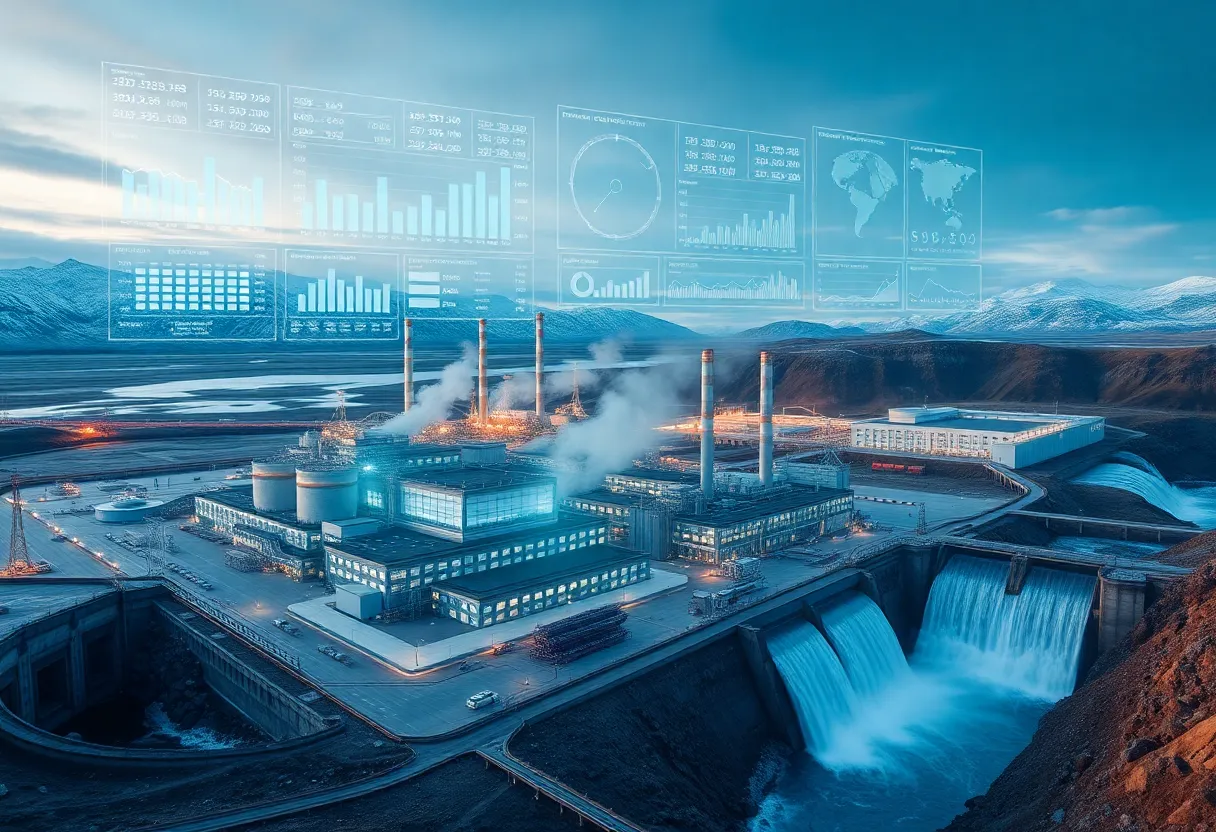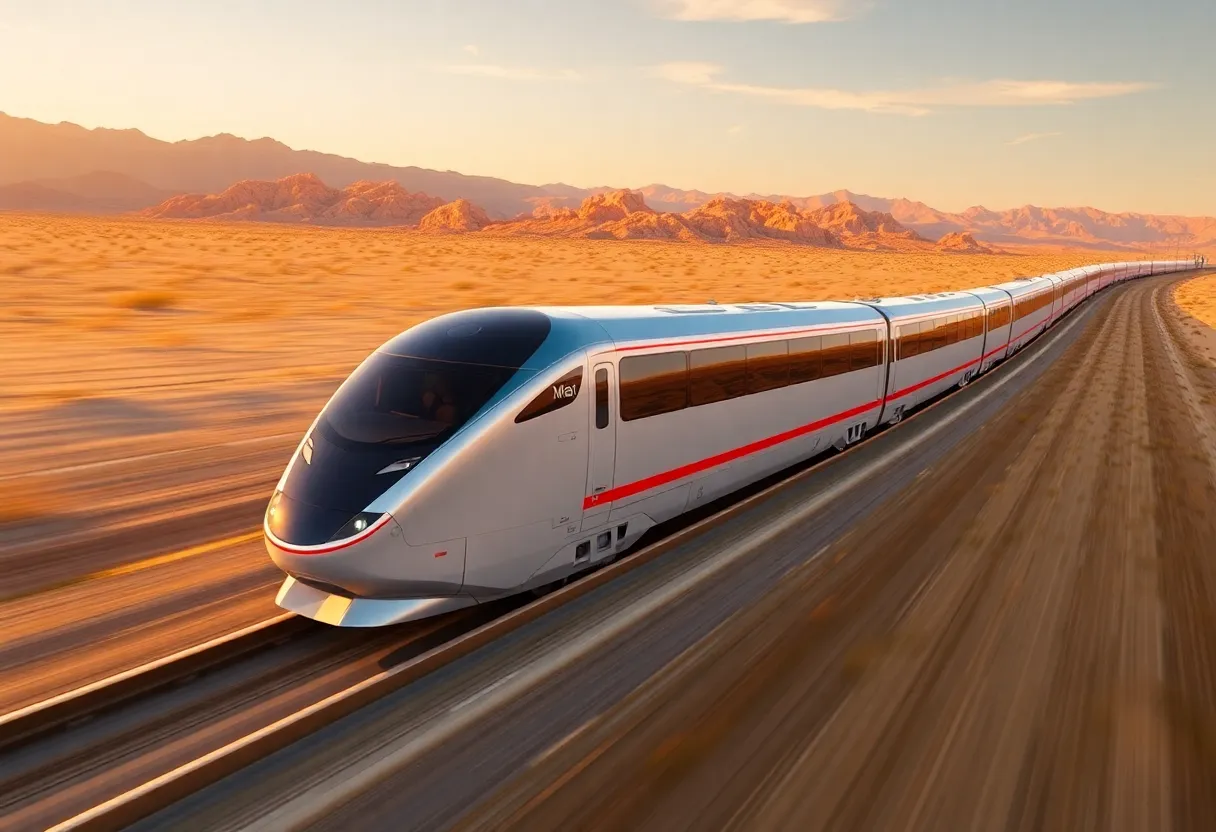Iceland, October 7, 2025
News Summary
Iceland’s renewable electricity and emerging industrial software are accelerating decarbonization across the aluminum supply chain. Icelandic firms like SnerpaPower are providing SaaS energy-management tools to smelters such as Norðurál, while startups like DTE supply real-time molten-metal analysis to boost recycling and process efficiency. The U.S. is also seeing momentum: a proposed Green Aluminum Smelter received initial DOE planning funding, and established firms are exploring low-carbon supply options. Partnerships between technology providers, recyclers and engineering firms aim to reduce emissions, improve energy use, and modernize an industry often hampered by older facilities.
Icelandic renewables, industrial software and U.S. funding converge to cut aluminum emissions
The aluminum industry is seeing a fast-moving mix of clean power, smart software and new investments aimed at lowering its carbon footprint. At the top of this shift are efforts to pair 100% renewable electricity with automated energy management and real-time metal analysis, plus a major federal grant process that could bring a new, low-emission U.S. primary smelter online.
What’s happening now
Global demand for electric vehicles has put pressure on suppliers to decarbonize, and aluminum is a focal point because its production uses a lot of electricity and produces significant CO2. Producers and technology firms are responding along three linked lines: access to low-carbon power, adoption of software services to forecast and automate energy use, and new recycling and sensing technologies to reduce waste and energy intensity.
Key projects and players
Century Aluminum Company is a Chicago-based firm with European and U.S. operations that highlight the range of decarbonization options. Century markets a Natur-Al™ low-carbon aluminum product line from its Norðurál subsidiary in Iceland. Norðurál, acquired in 2004, is one of the biggest primary aluminum smelters of its kind in Europe and benefits from Iceland’s grid, which is run on hydro and geothermal resources. Access to 100% renewable energy is presented by local sources as a key advantage for lower CO2 emissions.
Back in the U.S., Century says some of its operations have benefited from the renewable energy transition. Century Aluminum has two facilities in Kentucky that draw 100% of their electricity from the MISO (Mid-Continent Independent System Operator) grid. MISO is a 15-state grid that was an early adopter of wind energy and has been adding solar energy in recent years. One projection noted almost 13.8 gigawatts of added solar capacity on the MISO grid over about the next three years. However, the current federal energy policy environment has slowed parts of the renewable surge and shifted some near-term emphasis toward natural gas while renewables continue to be added.
Industrial software and grid services
Icelandic firms are exporting software and sensing solutions that aim to make heavy industry more flexible and efficient. Norðurál entered into an energy management agreement with the Icelandic firm SnerpaPower. SnerpaPower has developed a SaaS industrial decarbonization platform that enables facilities to automate their power schedules for maximum efficiency and grid support. SnerpaPower’s platform provides advanced energy management and flexibility services, enabling optimization and automation of power schedules while supporting power grid stability.
Ports and data centers are testing similar tools. Faxaflóahafnir, the Associated Icelandic Ports, has been installing shore power connections to reduce ship emissions, and upcoming large-scale shore power projects are expected to significantly raise the harbour’s electricity demand. SnerpaPower’s SaaS supplies real-time data and automated electricity forecasting intended to cut costs, simplify operations, improve energy efficiency, and reduce local carbon emissions from ships. The software also supported the Icelandic data center firm atNorth, which cited cost and carbon reductions after moving client operations.
Recycling, sensing and process automation
Recycling is part of the solution but is technically complex because of many alloy streams and product forms. Reykjavik-based startup DTE has developed LP-LIBS™ (Liquid-Phase Laser-Induced Breakdown Spectroscopy), a system for near-instant elemental analysis of molten metal. DTE’s technology allows in-situ chemical composition analysis to improve scrap utilization and support automation that replaces manual, hazardous sampling. DTE announced a strategic partnership with Ramboll to embed its analyzers into manufacturing environments to streamline workflows, enhance process control, and increase energy efficiency across aluminum production.
U.S. funding and industry scale
The U.S. Department of Energy has earmarked up to $500 million for a Green Aluminum Smelter Project led by Century Aluminum. The DOE described the project as potentially the first new primary smelter built in the U.S. in 45 years and said the facility would avoid an estimated 75% of emissions from a traditional smelter due to an energy-efficient design. A first tranche of $10 million was announced to launch Phase I for site selection, community engagement, and environmental reviews. The DOE also stated that the completed smelter would double the size of the current U.S. primary aluminum industry and produce high-purity aluminum for defense, EVs, semiconductors, building and clean energy uses.
Labor, local governance and wider context
In Iceland, labor talks have been active: Alcoa, the Union of Icelandic Electrical Workers (RSÍ), and the Union of General and Special Workers in East Iceland (AFL) reached a collective agreement and canceled a planned strike vote. The agreement applies retroactively from March and will remain in effect for four years. These local arrangements interact with technology and energy decisions that shape production continuity.
What this means for builders and project leaders
For project planners, the combined push of renewable grids, SaaS energy optimization, real-time metal sensing, and targeted federal funding creates practical pathways to reduce carbon and energy costs. But balancing power needs with grid reliability protocols and economical rates remains a core challenge. Data center construction and other large loads are complicating electricity markets, which increases the value of predictive software and flexible operations.
FAQ
What is Century Aluminum Company?
Century Aluminum Company is a Chicago-based firm.
What is Norðurál and when was it acquired?
Century acquired the Norðurál primary aluminum smelter facility in 2004.
What is Natur-Al™?
Century markets a Natur-Al™ low-carbon aluminum product line from Norðurál.
What is SnerpaPower’s role with Norðurál?
Norðurál entered into an energy management agreement with the Icelandic firm SnerpaPower.
What does SnerpaPower’s platform do?
SnerpaPower’s platform enables facilities to automate their power schedules for maximum efficiency.
How does SnerpaPower help ports?
SnerpaPower’s SaaS provides Faxaflóahafnir with real-time data and automated electricity forecasting intended to cut costs, simplify operations, improve energy efficiency, and reduce local carbon emissions from ships.
What is DTE’s core technology?
DTE’s core technology is LP-LIBS™ (Liquid-Phase Laser-Induced Breakdown Spectroscopy), enabling in-situ elemental analysis of molten metal.
Who partnered with DTE to integrate its systems?
DTE announced a strategic partnership with Ramboll to deliver integrated real-time chemical analysis solutions for the aluminum industry.
What federal support is tied to a new U.S. smelter?
Century Aluminum was tapped for up to $500 million in financial assistance from the U.S. Department of Energy for a “Green Aluminum Smelter Project” (the DOE earmarked $500 million for the project).
What was the DOE’s first funding step?
On January 15, the Energy Department announced a first tranche of $10 million toward its cost-share total of up to $500 million for the project.
How much emission reduction did the DOE estimate for the Green Aluminum Smelter?
The DOE stated the Green Aluminum Smelter would avoid an estimated 75% of emissions from a traditional smelter due to an energy-efficient design.
What electricity arrangement do Century’s Kentucky facilities have?
Century Aluminum has two facilities in Kentucky that draw 100% of their electricity from the MISO (Mid-Continent Independent System Operator) grid.
What is MISO?
MISO is a 15-state grid.
{
“@context”: “https://schema.org”,
“@type”: “FAQPage”,
“mainEntity”: [
{
“@type”: “Question”,
“name”: “What is Century Aluminum Company?”,
“acceptedAnswer”: {
“@type”: “Answer”,
“text”: “Century Aluminum Company is a Chicago-based firm.”
}
},
{
“@type”: “Question”,
“name”: “What is Norðurál and when was it acquired?”,
“acceptedAnswer”: {
“@type”: “Answer”,
“text”: “Century acquired the Norðurál primary aluminum smelter facility in 2004.”
}
},
{
“@type”: “Question”,
“name”: “What is Natur-Al™?”,
“acceptedAnswer”: {
“@type”: “Answer”,
“text”: “Century markets a Natur-Al™ low-carbon aluminum product line from Norðurál.”
}
},
{
“@type”: “Question”,
“name”: “What is SnerpaPower’s role with Norðurál?”,
“acceptedAnswer”: {
“@type”: “Answer”,
“text”: “Norðurál entered into an energy management agreement with the Icelandic firm SnerpaPower.”
}
},
{
“@type”: “Question”,
“name”: “What does SnerpaPower’s platform do?”,
“acceptedAnswer”: {
“@type”: “Answer”,
“text”: “SnerpaPower’s platform enables facilities to automate their power schedules for maximum efficiency.”
}
},
{
“@type”: “Question”,
“name”: “How does SnerpaPower help ports?”,
“acceptedAnswer”: {
“@type”: “Answer”,
“text”: “SnerpaPower’s SaaS provides Faxaflóahafnir with real-time data and automated electricity forecasting intended to cut costs, simplify operations, improve energy efficiency, and reduce local carbon emissions from ships.”
}
},
{
“@type”: “Question”,
“name”: “What is DTE’s core technology?”,
“acceptedAnswer”: {
“@type”: “Answer”,
“text”: “DTE’s core technology is LP-LIBS™ (Liquid-Phase Laser-Induced Breakdown Spectroscopy), enabling in-situ elemental analysis of molten metal.”
}
},
{
“@type”: “Question”,
“name”: “Who partnered with DTE to integrate its systems?”,
“acceptedAnswer”: {
“@type”: “Answer”,
“text”: “DTE announced a strategic partnership with Ramboll to deliver integrated real-time chemical analysis solutions for the aluminum industry.”
}
},
{
“@type”: “Question”,
“name”: “What federal support is tied to a new U.S. smelter?”,
“acceptedAnswer”: {
“@type”: “Answer”,
“text”: “Century Aluminum was tapped for up to $500 million in financial assistance from the U.S. Department of Energy for a “Green Aluminum Smelter Project” (the DOE earmarked $500 million for the project).”
}
},
{
“@type”: “Question”,
“name”: “What was the DOE’s first funding step?”,
“acceptedAnswer”: {
“@type”: “Answer”,
“text”: “On January 15, the Energy Department announced a first tranche of $10 million toward its cost-share total of up to $500 million for the project.”
}
},
{
“@type”: “Question”,
“name”: “How much emission reduction did the DOE estimate for the Green Aluminum Smelter?”,
“acceptedAnswer”: {
“@type”: “Answer”,
“text”: “The DOE stated the Green Aluminum Smelter would avoid an estimated 75% of emissions from a traditional smelter due to an energy-efficient design.”
}
},
{
“@type”: “Question”,
“name”: “What electricity arrangement do Century’s Kentucky facilities have?”,
“acceptedAnswer”: {
“@type”: “Answer”,
“text”: “Century Aluminum has two facilities in Kentucky that draw 100% of their electricity from the MISO (Mid-Continent Independent System Operator) grid.”
}
},
{
“@type”: “Question”,
“name”: “What is MISO?”,
“acceptedAnswer”: {
“@type”: “Answer”,
“text”: “MISO is a 15-state grid.”
}
}
]
}
Key features at a glance
| Feature | Detail |
|---|---|
| Renewable grid example | Icelandic electricity grid is entirely run on renewable energy from hydro and geothermal resources |
| U.S. grid example | Century Aluminum has two facilities in Kentucky that draw 100% of their electricity from the MISO (Mid-Continent Independent System Operator) grid |
| SaaS energy management | SnerpaPower’s platform enables facilities to automate their power schedules for maximum efficiency |
| Molten metal sensing | DTE’s core technology is LP-LIBS™ (Liquid-Phase Laser-Induced Breakdown Spectroscopy), enabling in-situ elemental analysis of molten metal |
| Federal support | Century Aluminum was tapped for up to $500 million in financial assistance from the U.S. Department of Energy for a “Green Aluminum Smelter Project” (the DOE earmarked $500 million for the project) |
| Estimated emissions reduction | The DOE stated the Green Aluminum Smelter would avoid an estimated 75% of emissions from a traditional smelter due to an energy-efficient design |
Deeper Dive: News & Info About This Topic
Additional Resources
- CleanTechnica: A new tool for aluminum industry decarbonization (2025)
- Wikipedia: Aluminium smelting
- Fortune: Can Iceland help the U.S. clean up the aluminum industry? (2025)
- Google Search: Iceland aluminum industry US partnership
- Reuters: Alcoa warns tariff could cost 100,000 U.S. jobs (2025)
- Google Scholar: Alcoa aluminum tariff jobs 2025
- ArcticStartup: DTE and Ramboll partner
- Encyclopedia Britannica: Ramboll (search)
- Bloomberg: Iceland can manage 10% U.S. tariff, central bank chief says (2025)
- Google News: Iceland tariff aluminum 2025
Author: Construction CA News
The CALIFORNIA STAFF WRITER represents the experienced team at constructioncanews.com, your go-to source for actionable local news and information in California and beyond. Specializing in "news you can use," we cover essential topics like product reviews for personal and business needs, local business directories, politics, real estate trends, neighborhood insights, and state news affecting the area—with deep expertise drawn from years of dedicated reporting and strong community input, including local press releases and business updates. We deliver top reporting on high-value events such as the Rose Parade, Coachella, Comic-Con, and the California State Fair. Our coverage extends to key organizations like the California Building Industry Association and Associated General Contractors of California, plus leading businesses in technology and entertainment that power the local economy such as Apple and Alphabet. As part of the broader network, including constructionnynews.com, constructiontxnews.com, and constructionflnews.com, we provide comprehensive, credible insights into the dynamic landscape across multiple states.




